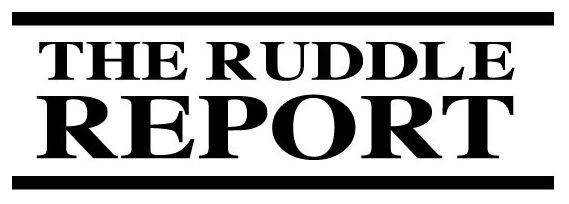
Gauging the Terminus: A Novel Method
Today, I’m going to propose something new that you probably never have thought about in your life, if you’re honest. It’s something I’ve discovered as a clinician and teacher. I’ve discovered it years ago, and I have not really ever integrated it into my teaching, but today, for the first time ever, I’m going public. So those of you who are listening today will hear a new idea from Ruddle’s mouth to your ears and it will be probably, for virtually all of you, a first time event. Here we go...
As you know, when we’re finished shaping or preparing a canal, it is normal to gauge the size of the apical terminus. We want to know how big the terminus is because it helps us towards cone selection and filling root canal systems. Historically, I’m just making up these numbers, these are just examples, but if you were to shape a canal, using a 25/08 instrument… in other words, its tip diameter, its D0 diameter, is a quarter of a millimeter, 0.25… its taper is 8%, and if it’s ProTaper, it’s 8% over the apical-third of the instrument only, then when you pull that instrument out, after it’s achieved length, you’re asking the question, “Is the terminus a quarter of a millimeter?”
What we’ve historically done is, we’ve said, gauge. I introduced the gauging concept back in the late 70s. It’s just a machining term. It’s a mechanical term, but gauging was accomplished clinically by taking the same ISO hand file, a 25/02, and sliding it to length to see if this instrument was either snug at length or loose at length. Remember a 25/02? The only thing it has in common with a 25/08 is their tip diameters are exactly a quarter of a millimeter. The shaping file has a taper of 8%, but the gauging file has a taper of 2%. So, obviously a 2% tapered instrument will fit easily and loosely over the length of a 25/08 shape.
So, we used gauging files. So, if you pulled out a 30/06, you’d gauge with a 30. If you pulled out a 20/08, you’d pull out a 20/02 hand file. We always gauged looking at the tip diameters and always gauging with an ISO tipped diameter of the same size as the D0 diameter of the shaping file.
Well, in courses, you notice that when colleagues are gauging in natural teeth, ex-vivo teeth, extracted teeth, that a lot of times sliding these instruments, these gauging files, around curvature or re-curvature creates quite a bit of friction. Sometimes you really wonder where is the instrument actually binding. We know that it’s only 2%, but if it’s going around double curves, it’s probably binding along the length of the preparation and that could give us a false impression of the true terminus of the canal as it was just shaped.
So, I thought about this for a lot of years and I’ve been thinking… There must be a better way to gauge a canal, rather than using a fluted file with active cutting blades. You’ve probably heard me say on stage many years ago that a company ought to make polymer gauging instruments, non-cutting instrumental technology… Just make them.
The problem is, when you do injection molding, your tolerances are plus or minus 05, 0.05, which means if you picked up a polymer that was a 25, it could be a 30 or, in reality, it could be a 20 at its tip. So there’s too much range of error to think about using something from the injection world as a gauging tool. So here’s my idea. I bet you’ve been sitting there with baited breath! You’re breathless… “When is he going to tell the idea? My gosh, I wish he would disclose the idea immediately.” Some of you already have your patent attorneys sitting right beside you so you can get this one down. This is a free one, for all. All can use it, starting tomorrow morning.
If you go out and buy some non-standardized, fine gutta-percha… So, remember, I’m saying two things. There is standardized gutta-percha and there is non-standardized gutta-percha. So I’m talking about non-standardized. Within the world of non-standardized, there is medium-fine, fine, fine-medium, medium-large, to name some of the sizes. So I’m bringing your attention back to size fine, non-standardized, feather-tipped… that’s the third one.
One, non-standardized. Two, feather-tipped, and three you guessed it (size fine).
Now, if you take this instrument and slide… the “instrument” is the gutta gauge… If you take that instrument and slide your cone through the gutta gauge… Maillefer, Dentsply Maillefer, makes the gutta gauge… you can slide a feather-tipped cone through a gutta gauge, and those gutta gauges are machined to incredible tolerances; much, much tighter than even ISO files. Remember, ISO files are plus or minus two hundredths, so a 10 file could be a 12 or it could be an 08. A 15 file could be a 17. It could actually be a 13.
Well the gutta gauge has that kind of tolerance. So, if you take a feather-tipped cone, stick it through the gutta gauge and trim off the end, you will have a perfect gauged cone that you can use as a gauging instrument. I might point out that this instrument is now smooth, it’s non-cutting, it’s completely flexible, and you can determine, with uncanny accuracy, the terminal diameter of your canal using this new novel idea.
I hope you find this useful. I think gauging just became much safer because now we don’t have to worry about moving a stainless, active file through multi-planar curvature and hoping we’re getting some kind of a read on the terminal diameter of the preparation.
Thank you very much!



